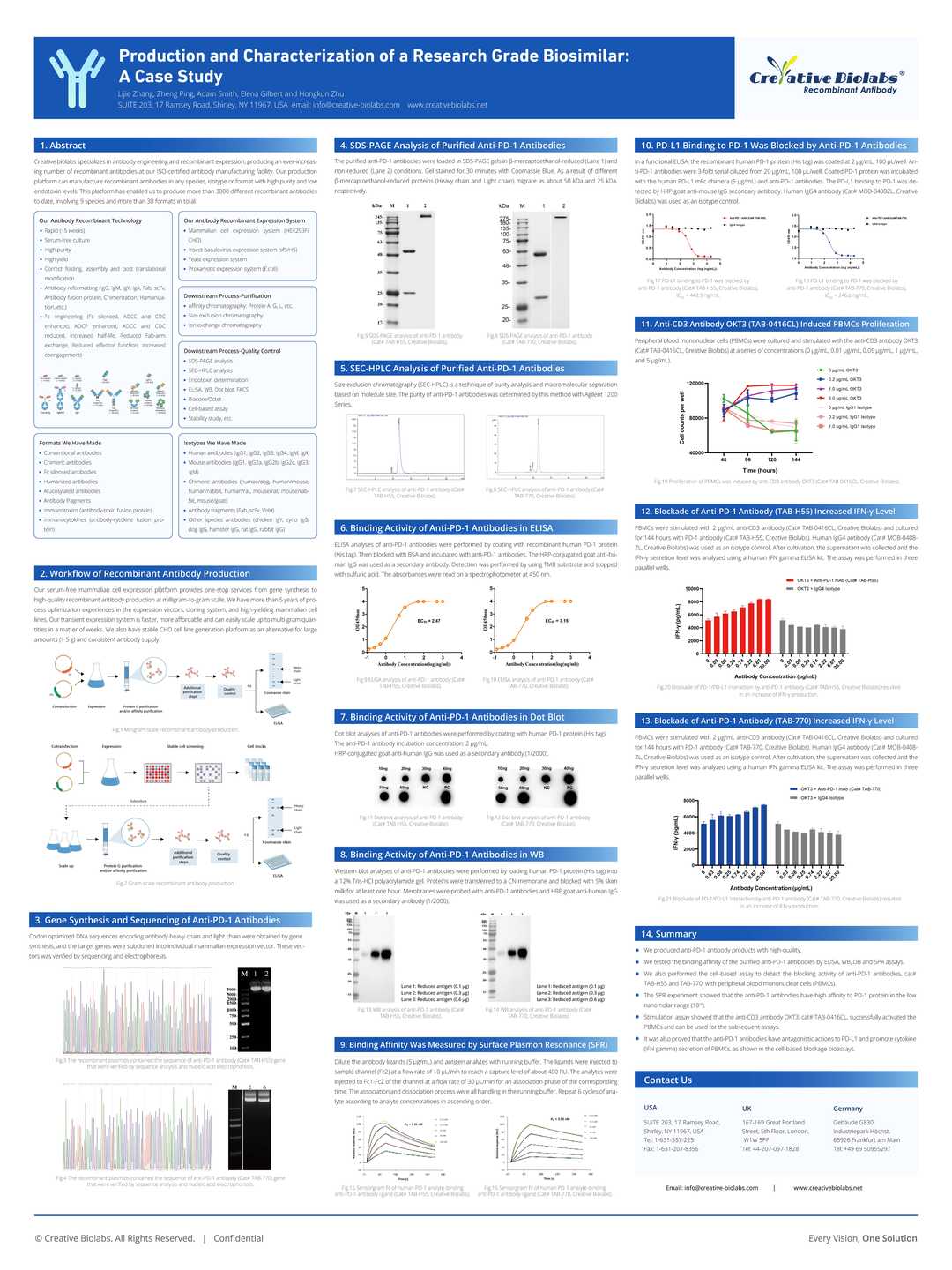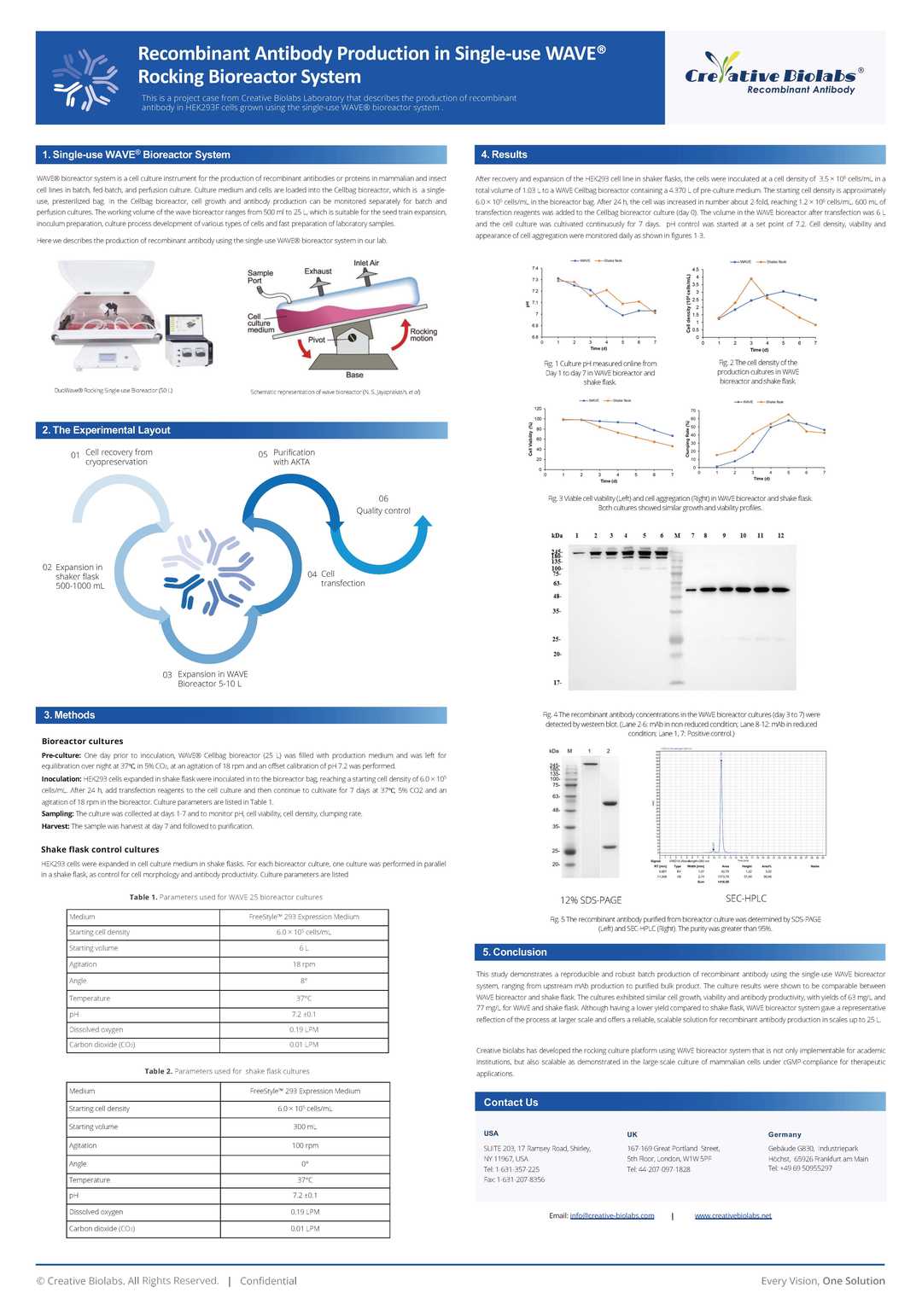Rabbit Anti-APOE Recombinant Antibody (VS3-CJ300)
CAT#: VS3-CJ300
This product is a rabbit antibody that recognizes APOE.





Specifications
- Immunogen
- Recombinant protein
- Host Species
- Rabbit
- Type
- Rabbit IgG
- Specificity
- Human and Mouse APOE
- Species Reactivity
- Human, Mouse
- Applications
- WB, ICC, IF, IHC, IP
- Conjugate
- Unconjugated
Product Property
- Purification
- Protein A affinity purified
- Purity
- >95% as determined by SDS-PAGE
- Buffer
- 40% Glycerol, 1% BSA, TBS, pH7.4.
- Preservative
- 0.05% sodium azide
- Storage
- Store at 4°C for short term. Aliquot and store at -20°C for long term. Avoid repeated freeze/thaw cycles.
- Shipping
- Ice packs
Applications
- Application Notes
- This antibody has been tested for use in Western Blot, Immunocytochemistry, Immunofluorescence, Immunohistochemistry, Immunoprecipitation.
Target
- Alternative Names
- AD2; APO-E; ApoE4; LDLCQ5; LPG
- Gene ID
- 348
- UniProt ID
- P02649
- Sequence Similarities
- Belongs to the apolipoprotein A1/A4/E family.
- Cellular Localization
- Chylomicron, Endosome, Extracellular matrix, HDL, Secreted, VLDL
- Post Translation Modifications
- APOE exists as multiple glycosylated and sialylated glycoforms within cells and in plasma (PubMed:29516132).
The extent of glycosylation and sialylation are tissue and context specific (PubMed:29516132).
Plasma APOE undergoes desialylation and is less glycosylated and sialylated than the cellular form (PubMed:2498325, PubMed:19838169, PubMed:20511397, PubMed:23234360).
Glycosylation is not required for proper expression and secretion (PubMed:2498325).
O-glycosylated with core 1 or possibly core 8 glycans. Thr-307 and Ser-314 are minor glycosylation sites compared to Ser-308 (PubMed:19838169, PubMed:23234360).
Glycated in plasma VLDL of normal subjects, and of hyperglycemic diabetic patients at a higher level (2-3 fold).
Phosphorylated by FAM20C in the extracellular medium.
Undergoes C-terminal proteolytic processing in neurons. C-terminally truncated APOE has a tendency to form neurotoxic intracellular neurofibrillary tangle-like inclusions in neurons.
- Protein Refseq
- NP_000032.1; NP_001289617.1; NP_001289618.1
- Function
- APOE is an apolipoprotein, a protein associating with lipid particles, that mainly functions in lipoprotein-mediated lipid transport between organs via the plasma and interstitial fluids (PubMed:6860692, PubMed:1911868, PubMed:14754908).
APOE is a core component of plasma lipoproteins and is involved in their production, conversion and clearance (PubMed:6860692, PubMed:2762297, PubMed:1911868, PubMed:1917954, PubMed:9395455, PubMed:14754908, PubMed:23620513).
Apoliproteins are amphipathic molecules that interact both with lipids of the lipoprotein particle core and the aqueous environment of the plasma (PubMed:6860692, PubMed:2762297, PubMed:9395455).
As such, APOE associates with chylomicrons, chylomicron remnants, very low density lipoproteins (VLDL) and intermediate density lipoproteins (IDL) but shows a preferential binding to high-density lipoproteins (HDL) (PubMed:6860692, PubMed:1911868).
It also binds a wide range of cellular receptors including the LDL receptor/LDLR, the LDL receptor-related proteins LRP1, LRP2 and LRP8 and the very low-density lipoprotein receptor/VLDLR that mediate the cellular uptake of the APOE-containing lipoprotein particles (PubMed:2762297, PubMed:1917954, PubMed:7768901, PubMed:8939961, PubMed:12950167, PubMed:20030366, PubMed:2063194, PubMed:8756331, PubMed:20303980, PubMed:1530612, PubMed:7635945).
Finally, APOE has also a heparin-binding activity and binds heparan-sulfate proteoglycans on the surface of cells, a property that supports the capture and the receptor-mediated uptake of APOE-containing lipoproteins by cells (PubMed:9395455, PubMed:9488694, PubMed:23676495, PubMed:7635945).
A main function of APOE is to mediate lipoprotein clearance through the uptake of chylomicrons, VLDLs, and HDLs by hepatocytes (PubMed:1911868, PubMed:1917954, PubMed:9395455, PubMed:23676495, PubMed:29516132).
APOE is also involved in the biosynthesis by the liver of VLDLs as well as their uptake by peripheral tissues ensuring the delivery of triglycerides and energy storage in muscle, heart and adipose tissues (PubMed:2762297, PubMed:29516132).
By participating in the lipoprotein-mediated distribution of lipids among tissues, APOE plays a critical role in plasma and tissues lipid homeostasis (PubMed:2762297, PubMed:1917954, PubMed:29516132).
Customer Review
There are currently no Customer reviews or questions for VS3-CJ300. Click the button above to contact us or submit your feedback about this product.
Submit Your Publication
Published with our product? Submit your paper and receive a 10% discount on your next order! Share your research to earn exclusive rewards.
Downloadable Resources
Download resources about recombinant antibody development and antibody engineering to boost your research.
Product Notes
This is a product of Creative Biolabs' Hi-Affi™ recombinant antibody portfolio, which has several benefits including:
• Increased sensitivity
• Confirmed specificity
• High repeatability
• Excellent batch-to-batch consistency
• Sustainable supply
• Animal-free production
See more details about Hi-Affi™ recombinant antibody benefits.
Datasheet
MSDS
COA
Certificate of Analysis LookupTo download a Certificate of Analysis, please enter a lot number in the search box below. Note: Certificate of Analysis not available for kit components.
Protocol & Troubleshooting
We have outlined the assay protocols, covering reagents, solutions, procedures, and troubleshooting tips for common issues in order to better assist clients in conducting experiments with our products. View the full list of Protocol & Troubleshooting.
Isotype Control
- CAT
- Product Name
Secondary Antibody
- CAT
- Product Name
See other products for "APOE"
Select a product category from the dropdown menu below to view related products.
| CAT | Product Name | Application | Type |
|---|---|---|---|
| MOB-1659z | Mouse Anti-APOE Recombinant Antibody (clone 41D9) | WB, ELISA, FC, ICC, IF, IHC, IP | Mouse IgG1, κ |
| HPAB-N0315-YC | Mouse Anti-APOE Recombinant Antibody (HPAB-N0315-YC) | ELISA, WB | Mouse IgG |
| HPAB-N0316-YC | Mouse Anti-APOE Recombinant Antibody (HPAB-N0316-YC) | ELISA, WB | Mouse IgG |
| VS1-YJ8 | Mouse Anti-APOE Recombinant Antibody (clone 4E4) | DB, ELISA, WB, IP | Mouse IgG1 |
| VS3-XY85 | Mouse Anti-APOE Recombinant Antibody (clone 1H4) | ELISA, WB, FC, IHC | Mouse IgG1 |
| CAT | Product Name | Application | Type |
|---|---|---|---|
| NABL-072 | Recombinant Anti-human APOE VHH Single Domain Antibody | WB, IHC, FC, FuncS | Llama VHH |
| CAT | Product Name | Application | Type |
|---|---|---|---|
| TAB-0976CLV | Human Anti-APOE Recombinant Antibody (TAB-0976CLV) | ELISA, IP | Human IgG |
| TAB-0976CLV-F(E) | Human Anti-APOE Recombinant Antibody; Fab Fragment (TAB-0976CLV-F(E)) | ELISA, IP | Human Fab |
| TAB-0976CLV-S(P) | Human Anti-APOE Recombinant Antibody; scFv Fragment (TAB-0976CLV-S(P)) | ELISA, IP | Human scFv |
| CAT | Product Name | Application | Type |
|---|---|---|---|
| NEUT-024CQ | Recombinant Mouse Anti-APOE Antibody | ELISA, BL | IgG |
| CAT | Product Name | Application | Type |
|---|---|---|---|
| MOR-0215 | Hi-Affi™ Rabbit Anti-APOE Recombinant Antibody (clone DS215AB) | FC, IHC-P, IP, WB | Rabbit IgG |
| MOR-4534 | Hi-Affi™ Rabbit Anti-APOE Recombinant Antibody (clone TH42DS) | WB, IF, ICC | Rabbit IgG |
| CAT | Product Name | Application | Type |
|---|---|---|---|
| HPAB-N0315-YC-S(P) | Mouse Anti-APOE Recombinant Antibody; scFv Fragment (HPAB-N0315-YC-S(P)) | ELISA, WB | Mouse scFv |
| HPAB-N0316-YC-S(P) | Mouse Anti-APOE Recombinant Antibody; scFv Fragment (HPAB-N0316-YC-S(P)) | ELISA, WB | Mouse scFv |
| HPAB-N0317-YC-S(P) | Mouse Anti-APOE Recombinant Antibody; scFv Fragment (HPAB-N0317-YC-S(P)) | IP, ELISA, WB | Mouse scFv |
| HPAB-N0318-YC-S(P) | Mouse Anti-APOE Recombinant Antibody; scFv Fragment (HPAB-N0318-YC-S(P)) | ELISA, WB | Mouse scFv |
| HPAB-0115CQ-S(P) | Mouse Anti-APOE Recombinant Antibody (clone 2E8); scFv Fragment | ELISA, Block | Mouse scFv |
| CAT | Product Name | Application | Type |
|---|---|---|---|
| HPAB-N0315-YC-F(E) | Mouse Anti-APOE Recombinant Antibody; Fab Fragment (HPAB-N0315-YC-F(E)) | ELISA, WB | Mouse Fab |
| HPAB-N0316-YC-F(E) | Mouse Anti-APOE Recombinant Antibody; Fab Fragment (HPAB-N0316-YC-F(E)) | ELISA, WB | Mouse Fab |
| HPAB-N0317-YC-F(E) | Mouse Anti-APOE Recombinant Antibody; Fab Fragment (HPAB-N0317-YC-F(E)) | IP, ELISA, WB | Mouse Fab |
| HPAB-N0318-YC-F(E) | Mouse Anti-APOE Recombinant Antibody; Fab Fragment (HPAB-N0318-YC-F(E)) | ELISA, WB | Mouse Fab |
| HPAB-0115CQ-F(E) | Mouse Anti-APOE Recombinant Antibody (clone 2E8); Fab Fragment | ELISA, Block | Mouse Fab |
| CAT | Product Name | Application | Type |
|---|---|---|---|
| VS-0424-XY16 | AbPlus™ Anti-APOE Magnetic Beads (VS-0424-XY16) | IP, Protein Purification |
| CAT | Product Name | Application | Type |
|---|---|---|---|
| VS-0125-FY51 | Mouse Anti-ApoE (clone W25-2E8) scFv-Fc Chimera | ELISA, Block, SPR | Mouse IgG1, scFv-Fc |
| CAT | Product Name | Application | Type |
|---|---|---|---|
| VS-0525-XY462 | Anti-APOE Immunohistochemistry Kit | IHC |
| CAT | Product Name | Application | Type |
|---|---|---|---|
| VS-0625-YC24 | Recombinant Anti-APOE Eliminating Antibody, pH-Sensitive (2E8 var.) | Antigen-Sweeping In Vivo. | Mouse IgG1 kappa |
Popular Products

Application: WB, ELISA, FC, IP, FuncS, IF, Neut

Application: ELISA, FC, IP, FuncS, IF, Neut, ICC

Application: ELISA, FC, IP, FuncS, IF, Neut, ICC

Application: IF, IP, Neut, FuncS, ELISA, FC, WB

Application: FC, IP, ELISA, Neut, FuncS, IF, ICC

Application: ELISA, FC, IP, FuncS, IF, Neut, ICC

Application: FC, IP, ELISA, Neut, FuncS, IF, IHC
![Figure 2 Anti-Human CD19 Recombinant Antibody Fab Fragment [TAB-1611CL-F(E)] in HPLC](https://img.creativebiolabs.net/productimages/COA-TAB-1611CL-F(E)-2.png)
Application: Depletion, FuncS

Application: ELISA, FC, IF, IHC, WB

Application: ELISA, Neut

Application: FC, IA, IF, IP, IHC, FuncS
For research use only. Not intended for any clinical use. No products from Creative Biolabs may be resold, modified for resale or used to manufacture commercial products without prior written approval from Creative Biolabs.
This site is protected by reCAPTCHA and the Google Privacy Policy and Terms of Service apply.











-2.png)


-3.jpg)




-2.png)

